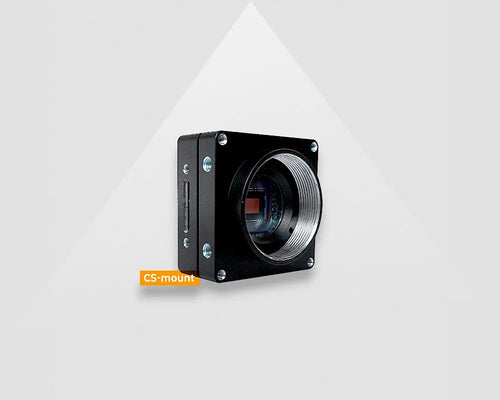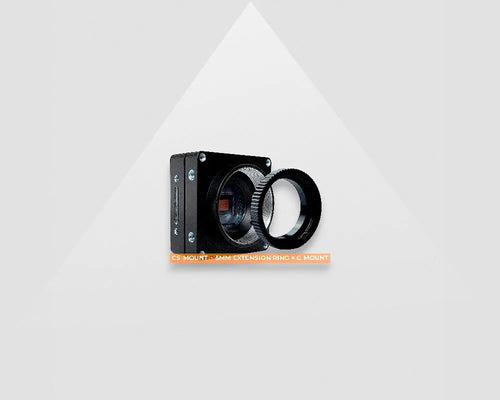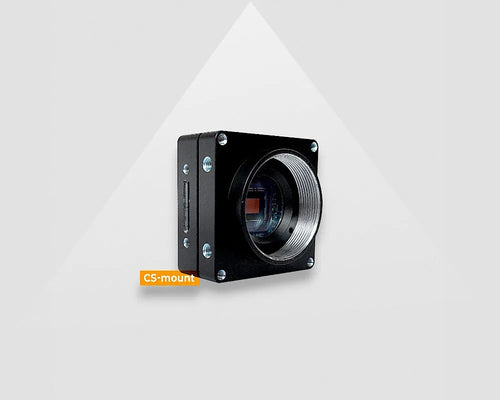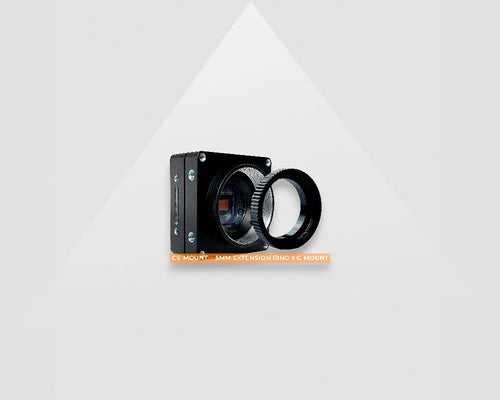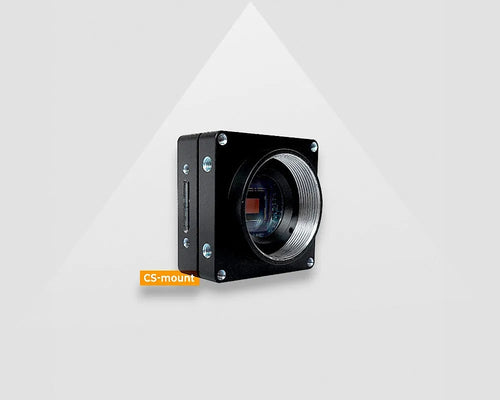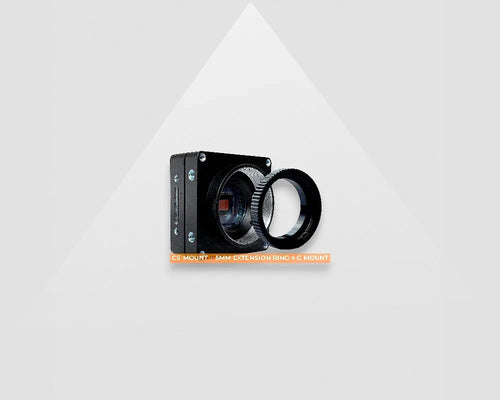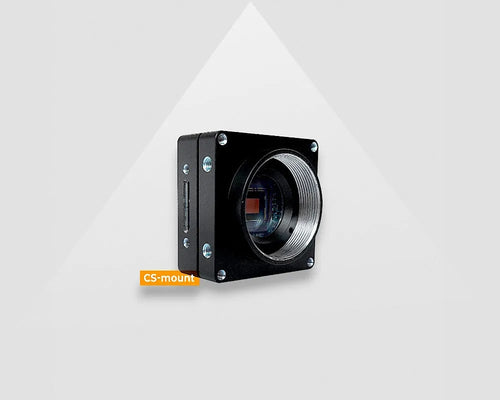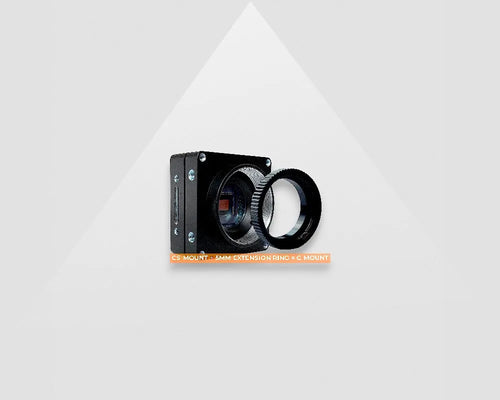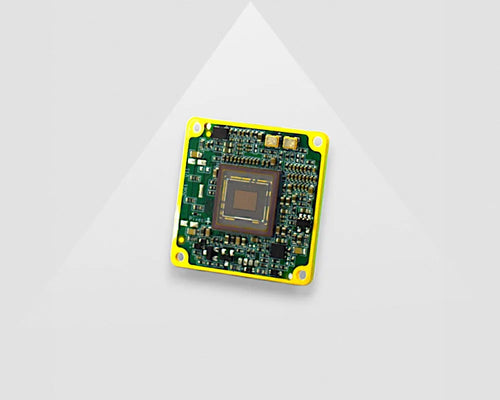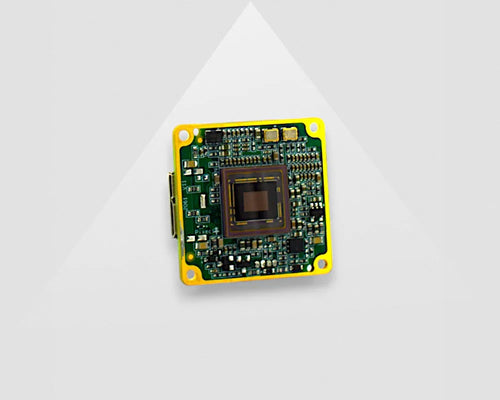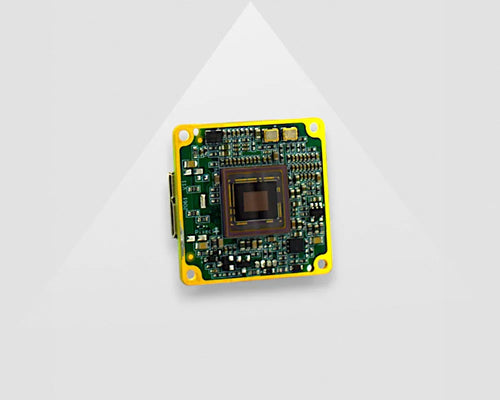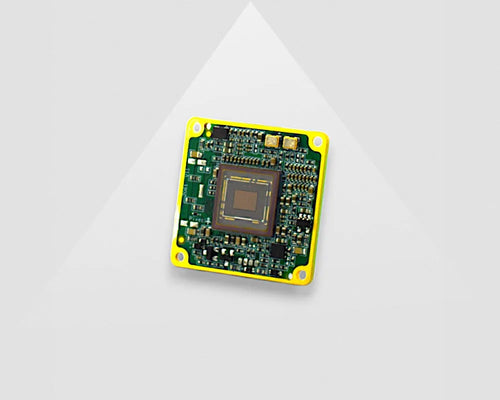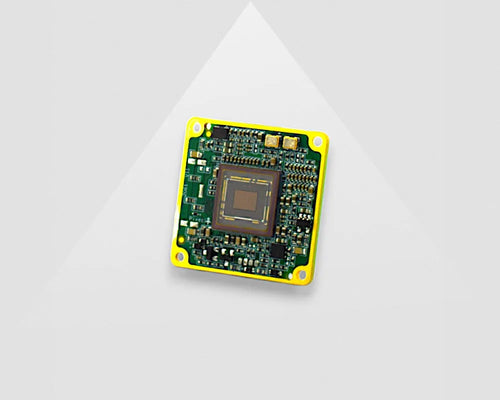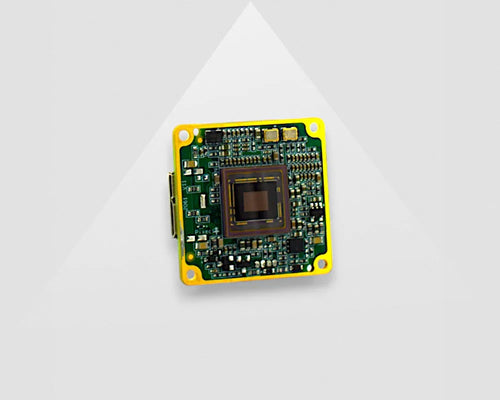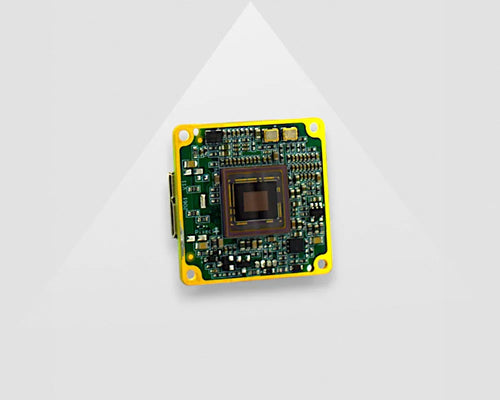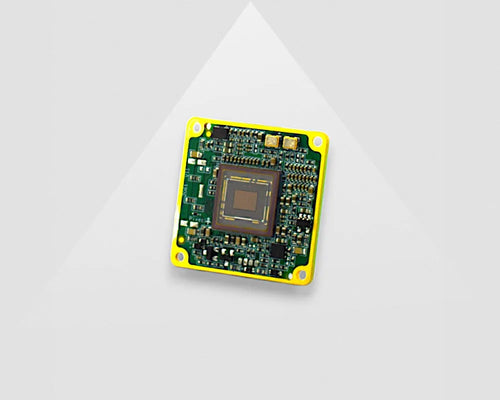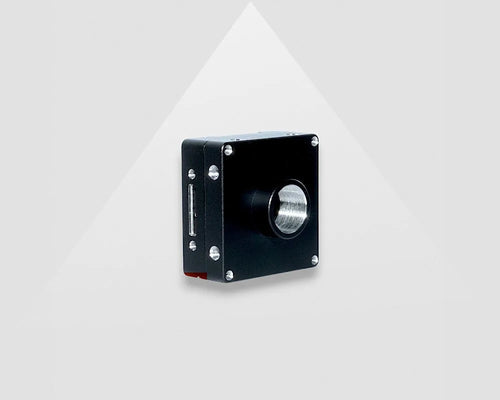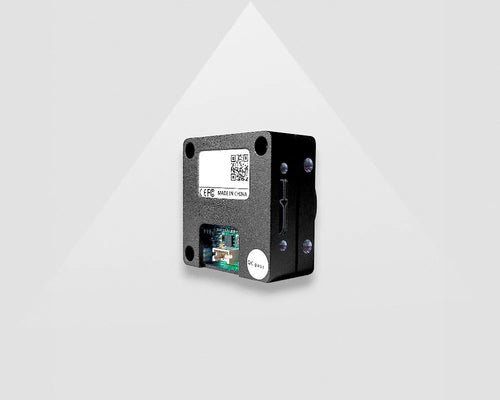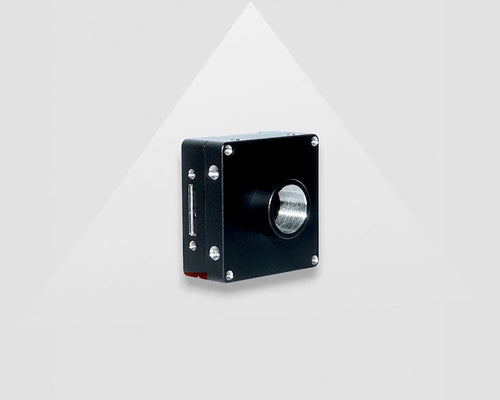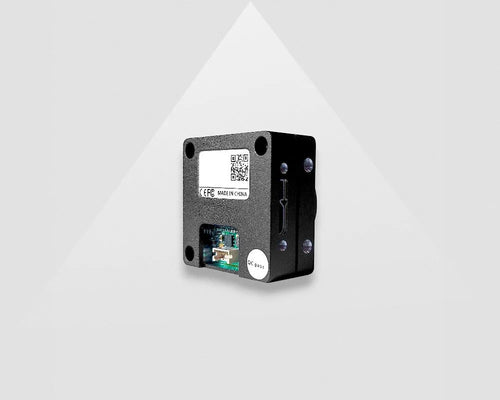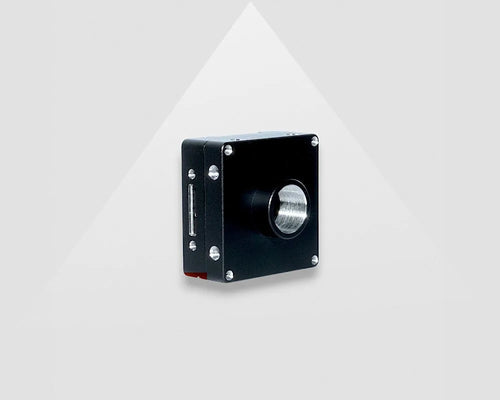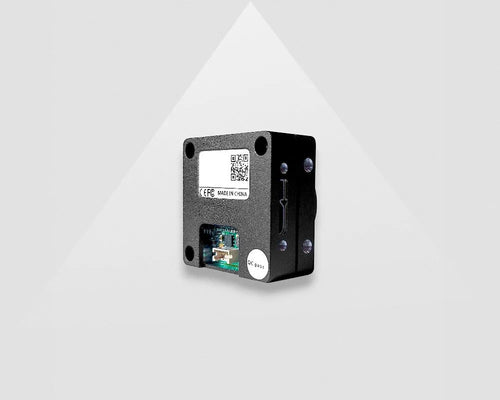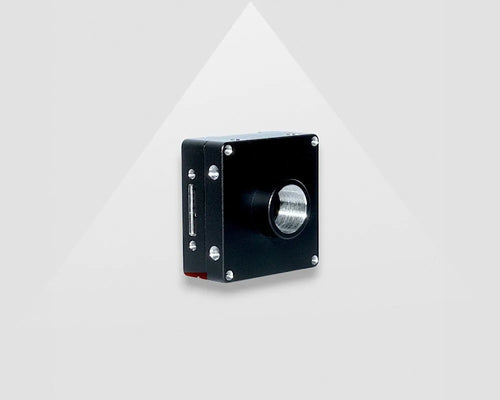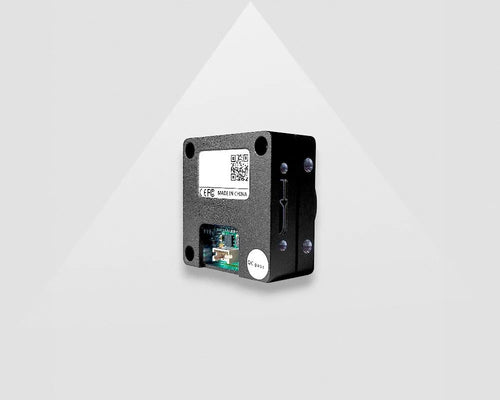
USB3 Cameras for machine vision
Dimensions of an USB 3.0 camera
The dimensions of most USB3 cameras are 29x29x29mm, which are indicated by MER2. The ME2S series have a dimension of 29x29x38.8mm. The biggest family is the MARS series, which mainly employs big Sony IMX sensors, with a dimension of 62x62x53.77mm.
There are cameras with and without housing available. The boardlevel camera series is suitable for high volume OEM projects.
VA Imaging has a strong portfolio of industrial USB3.0 cameras. On this page you have an overview of all our USB3 camera models.
You can also find at the bottom of this page more general information such as features and benefits of an industrial USB3.0 camera.
Embedded Vision and an industrial USB3 camera?
Our USB3 cameras are working with the following Embedded platforms:
- Developer boards that have a ARMv7 or ARMv8 processor, such as Raspberry Pi 4, Odroid, NVIDIA Jetson TX1, TX2 and Tegra TK1
- Developer boards using an Intel X86 platform such as UP-Board
To support these platforms, we offer the following tools:
- Drivers for Linux
- Example scripts in C++, C# and python
Is your embedded platform not included? Reach out to us to see whether we support it!
See also our example how to connect an USB3 camera to a Raspberry Pi.
Cables and hubs for an industrial USB 3.0 camera
These USB3 cameras have a large bandwidth of 400 megabytes per second. Therefore, there is a lot of data being sent over the USB3 cable to the computer. That is why it is essential to use a certified USB3 cable. Cheaper USB3 cables are often of bad quality, whereby the maximum amount of bandwidth is not utilized. This results into an instable system. All USB3 cables in our online shop are officially certified by Daheng Imaging and are 100% compatible with all our industrial USB 3.0 cameras.
The standard cable length of USB3 is a maximum of 4.6 meters. If you need to cover bigger distances you can use our USB3 active cables which go up to 50 meters. Another, often cheaper, option for longer cable lengths is to use our GigE vision cameras.
Does the industrial USB3 camera work on the USB3 port on my computer?
An important aspect that is often overlooked is the USB3 chip of the computer. Older computers with first generation USB3 ports often cause instable bandwidth. The latest generation of computers with USB3 ports do not have any issues, but some older computers might not work properly with USB3. Of course, you also have the option to expand your current computer system with one of our framegrabbers, which are extensively tested with our cameras. By doing this, you are guaranteed of a stable image transmission and you have the option to connect multiple industrial USB cameras to one computer. If you want to learn more about this, check out the article on our Knowledge Center about the USB3 connection.
Difference between USB2 cameras and USB3 cameras?
USB2.0 is an older USB-technology than USB3. USB3 is a suitable interface for high resolution and high-speed cameras and has a maximum bandwidth of 400 megabytes per second. This is 10 times faster than USB2 and 4 times faster than GigE. Every computer and almost all developer boards nowadays come with a USB3 port. The USB 3.0 camera uses less processing power than a USB2 camera, and there are more USB3 cameras. USB3 is in fact the successor of USB2, which means that USB2 isn't really developed any further. The development of industrial USB 3.0 cameras on the other hand, is in full swing. So, if a USB3 camera fits in with your budget, you should definitely go for one.
DirectShow and Software Development Kit (SDK) for a USB3.0 camera
Daheng Imaging’s industrial USB3 cameras are USB3 Vision compliant. The USB3 Vision Standard is developed by the European Machine Vision Association (EMVA). Daheng Imaging is associated both with the EMVA and AIA (Automated Imaging Association). The AIA is responsible for the further development and administration of the USB3 Vision protocol. This standardized protocol ensures that our industrial USB 3.0 cameras can communicate with all the standard computer vision software packages. Examples are Matlab, Halcon, Adaptive Vision and LabVIEW.
Free SDK for industrial USB 3.0 cameras
There is a free SDK available for this camera. With the help of our SDK, you can simply control and modify parameters. The SDK contains example programs in the following languages: DotNet, C++ and C#. This allows for a simple integration into your software.
Our DirectShow driver for Microsoft Windows ensures that commercial programs recognize our cameras as a “webcam”. The camera will be automatically work after installing the driver in programs such as Skype and Ispy (recording software).
Reviews USB Cameras
-
8Cameras are a great value for money
The cameras are a great value for money and the lenses also. The software is outdated and needs refreshing. It took me considerable amount of time to discover how to access the camera features. The cameras are a great value for money and the lenses also. The software is outdated and needs refreshing. It took me considerable amount of time to discover how to access the camera features.
-
10Excellent quality material and attentive and reliable supplier
In the commercial phase we had maximum support and delivery times were respected. The material is quite good with low and competitive costs. In the commercial phase we had maximum support and delivery times were respected. The material is quite good with low and competitive costs.
-
10Fast cable delivery
I had ordered a camera but forgotten to include the required cable. the cable was ordered and delivered very fast. I had ordered a camera but forgotten to include the required cable. the cable was ordered and delivered very fast.
-
8Fast delivery
Fast delivery even without paying the speed premium Fast delivery even without paying the speed premium
-
9Fast Delivery and good quality!
A very good company, I will continue to cooperate next time! A very good company, I will continue to cooperate next time!
-
10Fast service
Extremely fast service. I got the camera next day. Highly recommend the seller! Thank you! Extremely fast service. I got the camera next day. Highly recommend the seller! Thank you!
-
8.5Good Experience
Top, good experience. Very attentive and quick to respond. Product arrived in good condition. Top, good experience. Very attentive and quick to respond. Product arrived in good condition.
-
8Good quality and fast delivery
So far, all components meet expectation, it would be great, though, if 3d models for all components were available. So far, all components meet expectation, it would be great, though, if 3d models for all components were available.
-
10Great customer support, products and prices
I contacted GeT Cameras to help out with selecting the best camera and lens solution for me. They provided great support. I ordered with express and received the products 2 days later :) I contacted GeT Cameras to help out with selecting the best camera and lens solution for me. They provided great support. I ordered with express and received the products 2 days later :)
-
9Great prices, great service, everything great
Bought quite a few cameras from these guys, prices are great, service is great, delivery times of the hardware is also very nice. Bought quite a few cameras from these guys, prices are great, service is great, delivery times of the hardware is also very nice.
-
10Great products. Excellent support.
GeT Cameras in Germany made some photo's of our products to show the performance of their cameras and they looked perfect. Recently we purchased a camera with lens, and LED lights. We are not exper... GeT Cameras in Germany made some photo's of our products to show the performance of their cameras and they looked perfect. Recently we purchased a camera with lens, and LED lights. We are not experienced with machine vision but the installation worked out fine. After installation on our laboratory we were surprised again of the high quality of the photos and the versatility of this system. (options in Galaxy viewer and integration in Python. Recently we had an issue with the software and the customer support was able to give us the relevant information to fix it within one day. The next time we need a camera we will not be looking to other suppliers but contact GeT Cameras immediately.
-
10Great support and inhouse knowledge of the cameras
First I was a little bit sceptic about buying online industrial cameras. It’s a critical part for our machine. For a new product development there was a lot of price pressure. We needed a cheap cam... First I was a little bit sceptic about buying online industrial cameras. It’s a critical part for our machine. For a new product development there was a lot of price pressure. We needed a cheap camera. I called them and Caspar was providing great support. He even advised a cheaper camera than I had in mind. I was just surprised by the inhouse knowledge of get cameras about machine vision. Never expected this from a webshop. The image an built quality of the camera is also great. The camera feels and operates the same as our Basler cameras.
-
10Great support by email
I ordered a 20MP USB3 camera including a lens 2 months ago for a datamatrix code reading application. In the beginning I was sceptic because of the low prices, but support by email was great. They ... I ordered a 20MP USB3 camera including a lens 2 months ago for a datamatrix code reading application. In the beginning I was sceptic because of the low prices, but support by email was great. They advise a lens and provided additional technical information. Unfortunately they don't offer a loan service, but I decided to try it. I had the cameras in house within 2 weeks and connection was easy. The SDK looks like the SDK from Basler so I felt directly comfortable with it. The camera and lens was a perfect match and now I'm able to read small DMC codes on large products with just a single camera.
-
10Great support while selecting a lens
We have bought a 20MP camera and lens with extension tubes to use it as a digital microscope in our lab. The support with selecting a lens was great. Connecting the USB3 camera was easy. We receive... We have bought a 20MP camera and lens with extension tubes to use it as a digital microscope in our lab. The support with selecting a lens was great. Connecting the USB3 camera was easy. We received everything on time.
-
10High quality
High quality components and service! My order was handled quickly and arrived ahead of schedule. Would recommend. High quality components and service! My order was handled quickly and arrived ahead of schedule. Would recommend.
-
10It is important to have a skilled and efficient team of workers to get the goods efficiently.
Maintained a good relationship and very good communication from start to finish to purchase the item. Maintained a good relationship and very good communication from start to finish to purchase the item.
-
9Outstanding products and customer service
The customer service staff was friendly, easy to approach and helped us select the appropriate products which fit our use case perfectly. The customer service staff was friendly, easy to approach and helped us select the appropriate products which fit our use case perfectly.
-
10Outstanding products and customer service
Get Cameras were extremely kind to sponsor us with some amazing equipment for our RoboCup student team, Delft Mercurians. We had no issues with the cameras, they perform as advertised and enabled u... Get Cameras were extremely kind to sponsor us with some amazing equipment for our RoboCup student team, Delft Mercurians. We had no issues with the cameras, they perform as advertised and enabled us to continue with the project and the company was extremely supportive of us overall. The customer service staff was friendly, easy to approach and helped us select the appropriate products which fit our use case perfectly.
-
8Perfect customer interaction
Good site and perfect customer interaction. Good site and perfect customer interaction.
-
10Products delivered sooner than promised
Ordered products were delivered sooner than promised, all ordered items were included in the package and we had no problems to make them work (cameras work with the attached software and with Matlab). Ordered products were delivered sooner than promised, all ordered items were included in the package and we had no problems to make them work (cameras work with the attached software and with Matlab).
-
10Professional support, fast delivery and good product.
I liked that your team helped me chose the needed equipment by my description. The items that i have ordered are exactly what i have looked for. I liked that your team helped me chose the needed equipment by my description. The items that i have ordered are exactly what i have looked for.
-
10Prompt responses to many questions
Prompt responses to our many questions. A good selection of cameras despite shortages elsewhere in the industry and we have been able to specify some of these cameras to keep projects moving forwar... Prompt responses to our many questions. A good selection of cameras despite shortages elsewhere in the industry and we have been able to specify some of these cameras to keep projects moving forward. We continue to buy regularly.
-
10Quick responses and good selection of cameras
Prompt responses to our many questions. A good selection of cameras despite shortages elsewhere in the industry and we have been able to specify some of these cameras to keep projects moving forwar... Prompt responses to our many questions. A good selection of cameras despite shortages elsewhere in the industry and we have been able to specify some of these cameras to keep projects moving forward. We continue to buy from Get-Cameras regularly.
-
10Quick shipping and excellent customer service
The customer service is quick, friendly and helpful, shipping takes place fast and the quality of cameras and accessoires is excellent. Very useful is also the provided software, including coding e... The customer service is quick, friendly and helpful, shipping takes place fast and the quality of cameras and accessoires is excellent. Very useful is also the provided software, including coding examples to implement the cameras in our systems.
-
10Quick shipping and excellent customer service
The customer service is quick, friendly and helpful, shipping takes place fast and the quality of cameras and accessoires is excellent. Very useful is also the provided software, including coding e... The customer service is quick, friendly and helpful, shipping takes place fast and the quality of cameras and accessoires is excellent. Very useful is also the provided software, including coding examples to implement the cameras in our systems.
-
9Suitable product for us
We already have several of your cameras. These are for stock only. Since we are taking them into stock, that means we are happy with them. Only lead time is little bit longer. We already have several of your cameras. These are for stock only. Since we are taking them into stock, that means we are happy with them. Only lead time is little bit longer.
-
10Very good value for money
The camera arrived on schedule and gives excellent images. Very good value for money. The SDK makes it very easy to acquire images into a program of my own written using C++Builder (about 2 hours p... The camera arrived on schedule and gives excellent images. Very good value for money. The SDK makes it very easy to acquire images into a program of my own written using C++Builder (about 2 hours programming).
-
10Very helpful customer service
We needed a vision camera for our project very urgently. They where able to deliver it in a few days time. They responded quick to my emails also when I needed support. They send me an article how ... We needed a vision camera for our project very urgently. They where able to deliver it in a few days time. They responded quick to my emails also when I needed support. They send me an article how to quickly install the camera and set the most important parameters. it was very helpfull and within half an hour we had a good live view image. We have also ordered the lens they advised. It provides a nice and sharp image.
Vision & Automation Resources
-
FAQ pageFAQ
Most common questions are already answered on our FAQ page. Questions about delivery times, warranty, loan, returns, longevity, manuals etc.
-
DiscoverImaging Software
Image processing software captures the images from an industrial camera and performs complex image processing tasks like segmentation, detection, code and text reading.
-
DiscoverKnowledge Center
We share our machine vision knowledge in our knowledge center. Find tutorials how to connect cameras, install software & program I/O.
-
DiscoverMachine Vision Applications
Check how our customers use our industrial cameras, lenses and lighting in their application
-
Talk to usMachine Vision Experts
Ask our machine vision experts! We answer rapidly and think along with your imaging project.
-
DiscoverDownloads
Image processing software captures the images from an industrial camera and performs complex image processing tasks like segmentation, detection, code and text reading.
















































